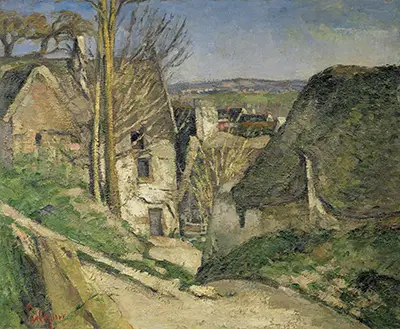The Hanged Man's House in Auvers has an important role in the history of Paul Cézanne's career. In fact, it was the first painting that the French artist ever sold to a private collector, following its presentation at the first Impressionist exhibition in 1874.
Today, it is on display in Paris at the Musée d'Orsay, where it can be viewed alongside many of Cézanne's other great works. This painting was completed in 1873, and like most of Cézanne's work, is an example of oil on canvas. Painted at a time when Cézanne was experimenting with Impressionism, The Hanged Man's House in Auvers shows a major break with his earlier works. Gone are the dark colours which characterised Cézanne's first paintings. Instead, the colour palette has changed dramatically. Inspired by his friendship with fellow artist Camille Pissarro, who he had worked alongside, Cézanne swapped his trademark dark colours for a paler palette.
The painting is also characterised by broken brush strokes, a technique that was becoming poular among the Impressionists. Furthermore, it shows a change in subject matter, with Cézanne moving to landscapes, instead of the dramatic, complex subjects that had been so important in the early years of his career. However, this painting can't be described as a standard Impressionist work. Although Cézanne was dabbling in the world of Impressionism, he retained some unique touches that set his paintings apart from other artists. Here, it's shown in the complexity of the composition. There is no single strong focal point; instead, several paths move in different directions, encouraging the eye to follow them when one looks at the painting.
The brush strokes are broken, in the Impressionist style, but are also thicker than the standard, giving the canvas an overall impression of having been plastered with paint. Despite the light colours, the mood of the painting is subdued, and the twisted branches of the tree and starkly angled thatched roofs lend the picture a sense of confusion. Although the painting contains vegetation, it is far from lush. Instead, it seems stiff and stark, giving the entire image an austere feeling.
The lack of people - the village in the painting seems utterly deserted - perhaps creates a subdued, reflective mood. On its debut, the painting proved puzzling for critics, who struggled to appreciate it. It did not seem to fit comfortably with Cézanne's back catalogue, and nor did it sit entirely well with the growing Impressionist movement. However, it it is now viewed more positively, and is a good example of a painting that came at a turning point in Cézanne's career.




